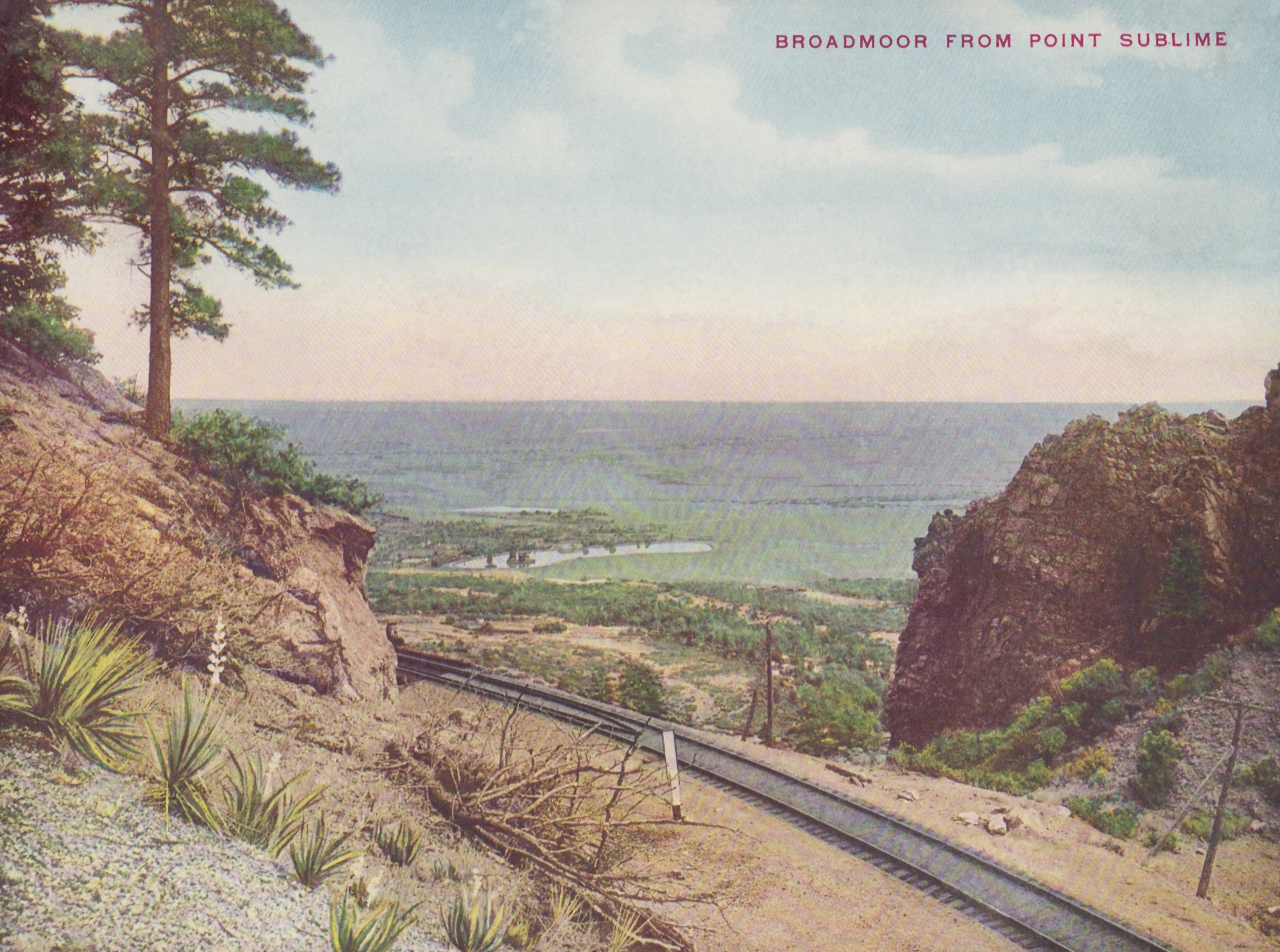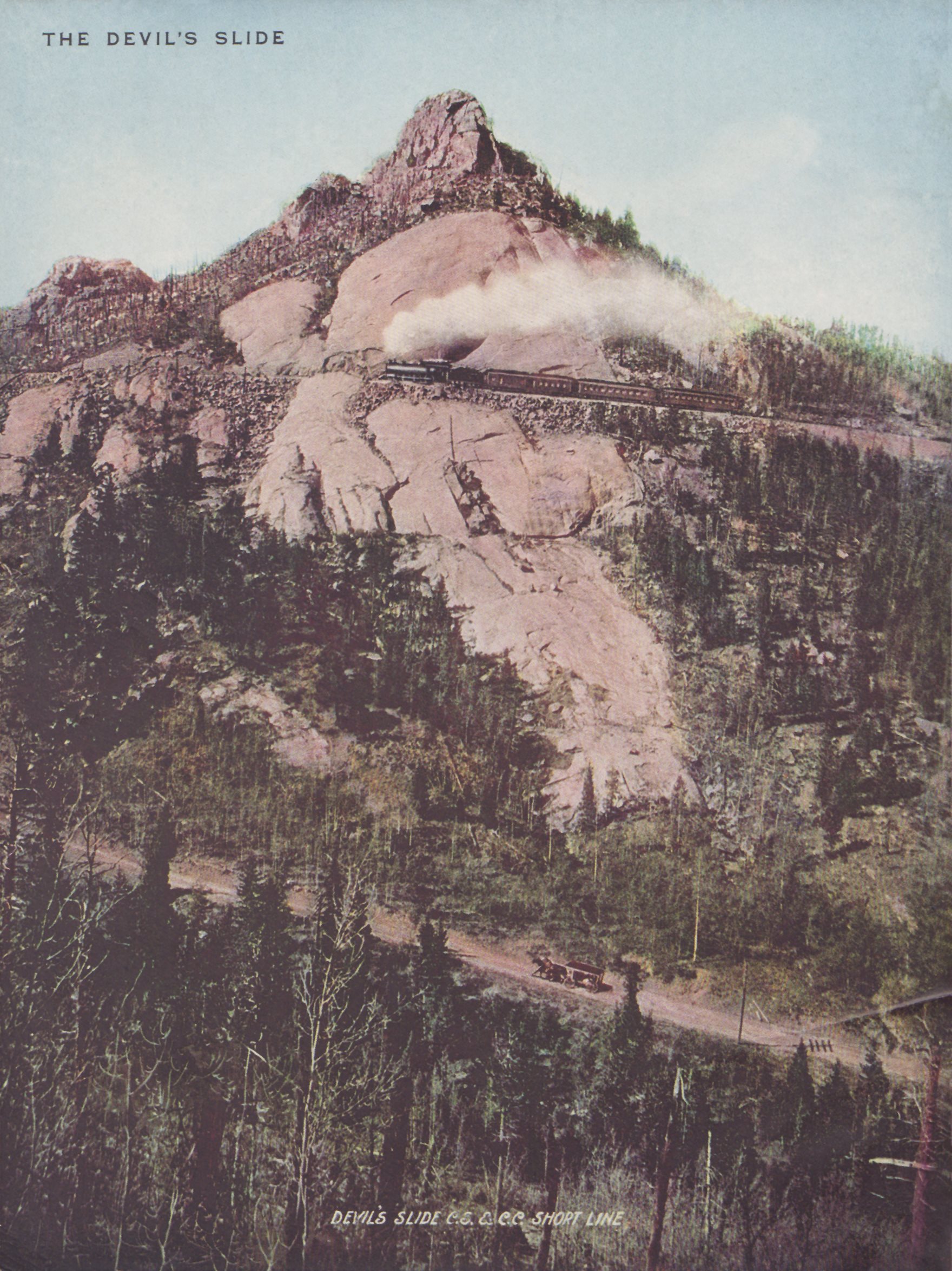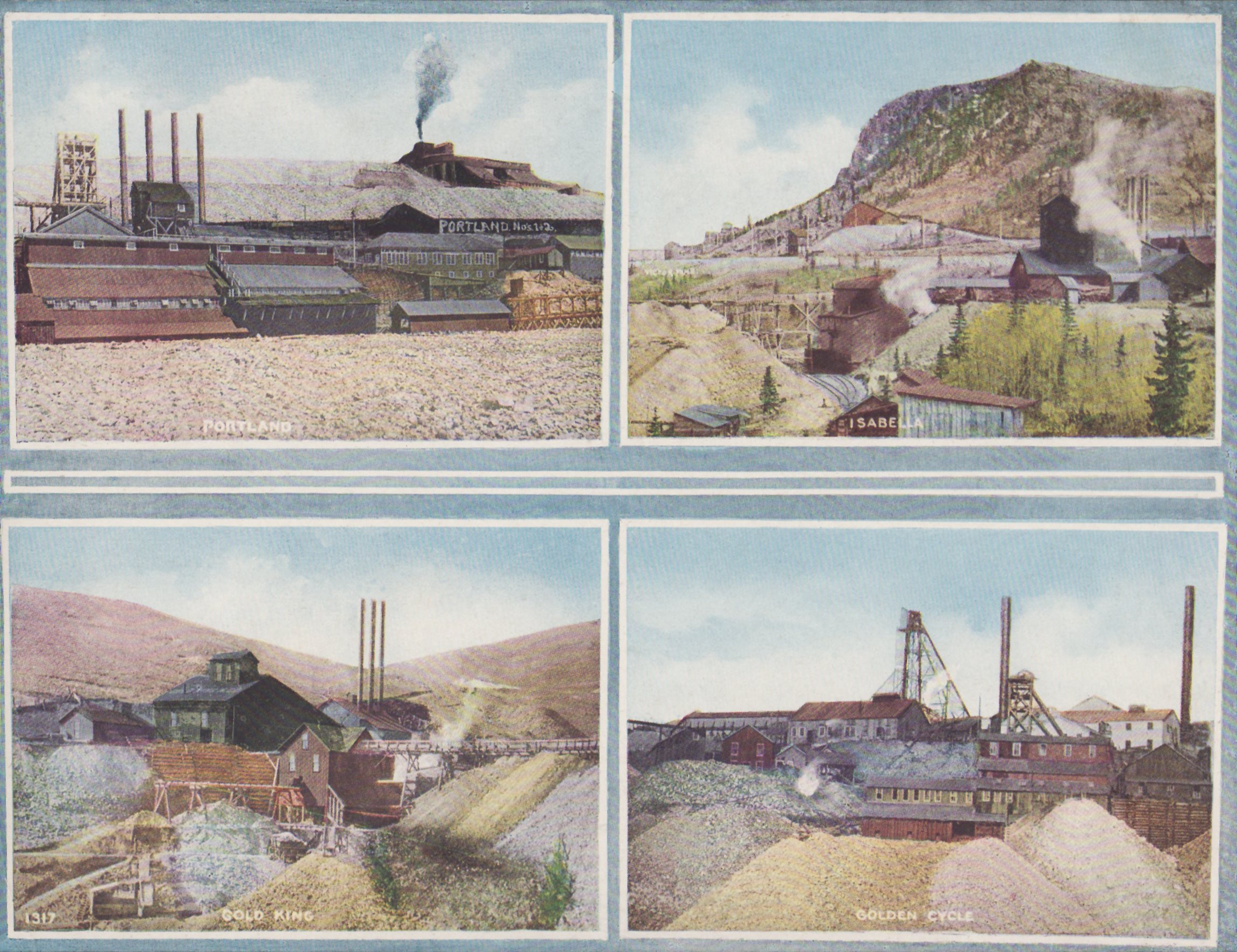-> My Collection; The whole book can be seen here as an Image Only Album. Text is from page four.
I fixed the text where it had errors and while source had no pics, I used some of the pics from the source book to sprite up the text.
- The "Short Line" is the popular abbreviation of "The Colorado Springs & Cripple Creek District Railway Co," which is the corporate title.
- The preliminary surveys for this road were made in the summer and fall of 1899—the final survey late in the same year.
- Actual building began January, 18901900, the last spike driven at Cripple Creek March 23, 1901, and the line formally opened to the public April 8, 1901.
- From Colorado Springs to Summit, 21 miles, a uniform grade of 3.56 per cent is maintained, and the maximum curvature is 16 degrees.
- There are nine tunnels cut through solid granite, the longest being 530 feet.
- The road cost four and a half millions of dollars, making it, according to mileage, the most expensive road in the West, and is conceded to be the best built mountain railroad in the country.
- The roadbed is wide, built on solid rock around the mountain sides, ballasted with disintegrated granite, clean and dustless.
- It is standard gauge, laid with 75-pound steel on close-spaced ties, alignment perfect and curves scientifically elevated to prevent pitching or jarring of coaches.
- The locomotives are of the consolidated type, with eight 51-inch drivers and weighing with tender 277,600 pounds.
- The passenger equipment is the best, and of the down-to-the-day type, and the palace observation cars run on the rear of all trains afford a perfect view of the scenery.
- The road starts at the world-famed tourist city of Colorado Springs and runs to and through the greatest gold-producing district in the world.
- It was built by Colorado Springs men with Cripple Creek gold.
So much for cold prosaic facts easy to write and to comprehend, but to attempt to describe a trip over this road is like trying to paint the elusive tints of the fleecy clouds drifting across the sky, bathed in the reflected glory of a setting sun, a task never yet accomplished.
The road itself is the result of a dream (so many people said) of a dreamer, one Irving Howbert, who dreamed of climbing the mighty peaks and spanning the bottomless chasms with a modern railroad, and yet he lived to see his dream a reality.
Its building taxed to the utmost the ingenuity of the most skillful of engineers, who had to overcome the apparent inexorability of nature, and their finished work is worthy of rank among the few so-called wonders of the world.
Leaving Colorado Springs on this serpentine ribbon of steel we begin to climb at once, and the ascent to be negotiated is nearly a mile. As you gradually rise above the bluffs and follow the side of the mountain, you get, on the north, a fine view of West Colorado Springs and Colorado City, while to east lies Colorado Springs, and stretching away to the horizon lies one of the grandest panoramas of undulating hills and plains in the world.
Climbing higher and higher the north wall of Cheyenne Mountain, almost the very top, is reached. Here stretches another matchless view, Broadmoor and its crescent-shaped lake, and this point is well named "Point Sublime." And here it dawns on the writer that it's impossible to give in such an article as this, any adequate or detailed description of such a trip, and from now on he will only tell in a general way of what he sees.
From Point Sublime the road turns into the mountains, and winding serpent-like along the sides of the great canons and through gigantic cliffs, presents an ever-changing succession of nature's marvels.
We are now 10,000 feet high and nearing the summit, where the train runs through many beautiful mountain parks, and the home of wild animals, many of which are frequently seen from the train.
From the Devil's Slide, Pueblo, forty-five miles away, can be plainly seen, and a little farther on one can see the Sangre de Christo range, called by the early Spanish fathers, "The blood of Christ," because of the crimson hue which the sun throws on the snowy tops.
Among the many remarkable points of interest on the line, one of the most interesting is St. Peter's Dome. Already two miles above the sea, it towers away above us, hewn out of rock and earth by time's tireless tools, a sentinel of the ages probably antedating its illustrious namesake.
Looking at this massive freak of nature one would never dream of reaching its top by train, but before he scarcely realizes it in the rapid succession of wonder after wonder, he is looking out from the dizzy height up to which his eyes had strained so short a time before. Between here and Duffields you travel over three miles by rail to cover a distance of 1,600 feet and an elevation of 560 feet.
Among the many unusual scenes along this line is noted "The Devil's Slide," down which one looks over a smooth wall of solid granite a sheer 1,000 feet, Cathedral Park, a mass of fantastic rock formation shaped by pre-historic upheavals of nature, and containing a perpetual ice cavern.
After passing many other positively gorgeous spectacles, the train finally enters the famous gold camp from which untold millions have been taken, and it is estimated, another billion is due.
The scenic sublimity and the marvels of engineering skill seen on this road are continuous from the beginning to the end.
It would baffle the eloquence of a Demosthenes or Cicero, the trenchant pen of a Dumas, or a Kipling, to do the description of a trip over this line justice.
No man lives, so cold, so devoid of sentiment, so matter-of-fact in disposition, so unresponsive to the call of nature that he can take this trip without failing to lose all sense of self, of his own insignificance and find himself overwhelmed with a combination of humility and wonderful joy in the presence of the awe-inspiring evidence of the Creator's power and handicraft. It must be seen to be appreciated and no tourist can afford to miss it.



